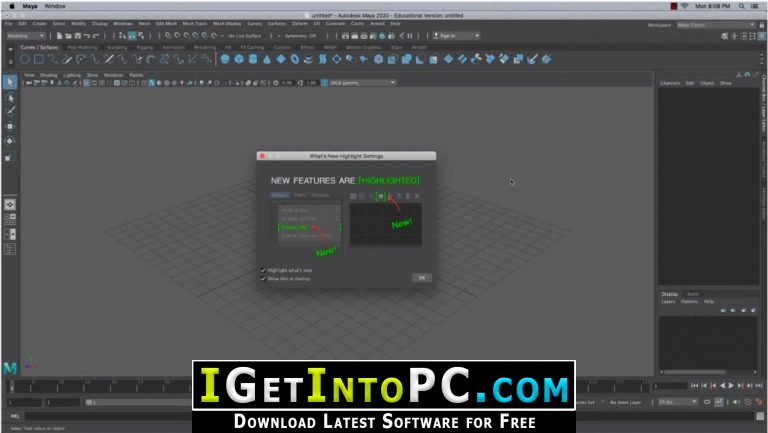

As you update the animation, you can edit or remove the bookmarks as needed. For example, imagine you are working on a “character gets punched” animation, and you want to identify the part of the animation where your character recovers, you can use a bookmark for it.

You can use these to “mark” specific parts of the timeline for easier identification. You can learn more about Bifrost in this video: Īnother really nice feature, for those interested in animation, is the Time Slider Bookmarks. Now, if Autodesk brought something like Face Robot into Maya, I'd be happy. Some people are comparing it to Softimage ICE, although internally it is not the same as ICE (meaning that Autodesk didn't just “port ICE to Maya”). Bifrost is a node-based environment used to create effects and custom behaviors. Maya 2020 can auto-snap keyframes to whole frames, preventing this issue.Īnother thing that has made it to Maya is Bifrost. That causes some keyframes to fall on non-whole frames (for example frame 25.57). When you are animating, you find yourself moving keys around, or even scaling groups of keys to retime portions of your animation. While playing back at 200fps feels cool, it doesn't really help when you are working at 24 or 30 fps depending on what your target medium is. When you use this, I'd advice you to set your Playback Speed to “Real-time” so you can see the animation at real speed. For example, you can see this animation with rigid bodies and nCloth playing at around 200fps when Cached Playback is on, compared to the 5fps when it's off. The feature has now implemented caching dynamics playback, allowing you to play animations with dynamics a lot faster. Subscribe to 3D World here (opens in new tab). This content originally appeared in 3D World magazine. With all the new updates, it could save you a lot of time on your projects. All in all, Maya 2020 is an essential upgrade if you're an animation studio. There is so much to be excited about with this release, and I haven't even covered the modelling and speed improvements. I have many clients who still use Maya 20, so for me, these shiny new nodes aren't an option just yet. The one issue I do have with the new rigging tools is they aren't backwards compatible. With the offsetParentMatrix attribute, constraints could be used less and less, meaning the art of rigging is more streamlined. These are a series of nodes and attributes that make rigs cleaner and less cluttered. While we are on the subject of rigging, another new addition I am personally excited about is the introduction of matrix-driven workflows. With Maya 2020, animation has seen significant improvements, as has rigging (Image credit: Antony Ward)


 0 kommentar(er)
0 kommentar(er)
